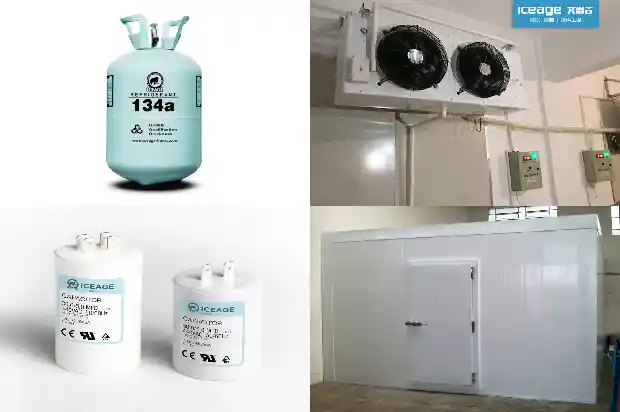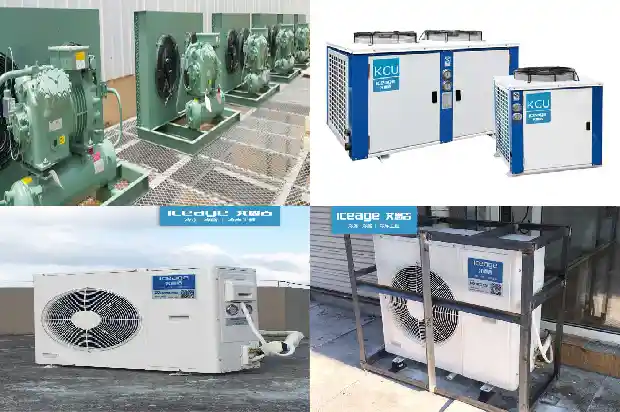Principles and Applications of Common Pressure Control and Pressure Regulating Valves
2025-02-27
- High-pressure Pressure Controller
The high-pressure pressure controller is used to control the high-pressure or exhaust pressure. When the air volume of the air-cooled condenser is insufficient or there is no air flow, the water volume of the water-cooled condenser is insufficient or the water temperature is too high, or even there is no water supply, or for other reasons that cause the high-pressure to exceed the set value of the pressure controller, the controller trips, disconnects the circuit of the contactor, and stops the compressor to protect the system.
The set pressure of the high-pressure controller is related to the type of refrigerant and the performance of the compressor. Generally, the set pressure of the high-pressure pressure controller is about 0.1 to 0.2MPa higher than the maximum exhaust pressure.
- Low-pressure Pressure Controller
The low-pressure pressure controller is used to control the low-pressure or suction pressure. When the system lacks refrigerant, or encounters blockage, the valve is forgotten to be opened, or the heat load is too low, or for other reasons that lead to too low a low-pressure, the controller trips, disconnects the circuit of the contactor, and stops the compressor to protect the compressor from running under too low a pressure, improving the economic efficiency of the system operation. The set value of the low-pressure controller is generally universal, that is, about -0.1 to -0.55MPa. - Oil Pressure Controller
The oil pressure controller is the pressure difference between the suction pressure and the oil pressure.
If the oil pressure is insufficient, the oil cannot circulate normally, resulting in poor lubrication and damage to the compressor. In addition, for compressors with a cylinder unloading mechanism, if the oil pressure is insufficient, the unloading mechanism cannot work. Therefore, oil pressure protection must be set for this type of compressor.
Since the driving force of the oil circulation is the difference between the oil pump outlet pressure and the crankcase pressure (i.e., the suction pressure), the oil pressure protection uses this pressure difference as a signal to achieve the safety protection of the compressor. Because the oil pressure difference controller has the function of delayed execution, it does not affect the starting and operation of the compressor when the oil pressure has not been established before starting the machine. After starting to run, a short-term lack of oil will not endanger the safety of the compressor. If the oil pressure still cannot be established after the set delay time, it indicates that there is a fault, and at this time, the compressor will stop.
For compressors without an unloading device mechanism, the oil pressure is generally 0.1MPa higher than the suction pressure. For compressors with an unloading device mechanism, the oil pressure is generally 0.15 to 0.3MPa higher than the suction pressure. The part higher than the suction pressure is the difference value, that is, the set value of the pressure difference controller. When using it, the following points should be noted: - The high-pressure and low-pressure interfaces should be connected to the oil pressure at the oil pump outlet and the low pressure of the crankcase respectively, and they must not be connected in reverse.
- The controller body should be installed vertically, with the high-pressure port at the bottom and the low-pressure port at the top.
- The set value of the oil pressure difference is generally adjusted to 0.15 to 0.3MPa.
- For the pressure difference controller using thermal delay, after the controller has operated once, it must be manually reset after the thermal element is completely cooled before it can be started and used again.
- Evaporation Pressure Regulating Valve
It is installed in the suction pipeline behind the evaporator and is used to regulate systems that contain one or more evaporators to maintain different minimum evaporation pressures. The evaporation pressure regulating valve is widely used in freezing and refrigeration systems, especially in parallel refrigeration units and cold storages with multiple temperatures for one machine. - Condensing Pressure Regulating Valve
The condensing pressure regulating valve is generally installed on the cooling water pipeline of the condenser and adjusts the flow rate of the cooling water according to the change of the condensing pressure. It adjusts the opening degree of the valve by directly sensing the pressure change of the refrigerant circulation, so that enough cooling water can flow through, thus saving cooling water. In areas where the ambient temperature changes violently, this system can solve many condenser control problems because it can suppress pressure changes and thus prevent problems from occurring.
When the condensing pressure of the refrigeration system rises, the condensing pressure valve will automatically open wider, allowing more cooling water to enter the condenser and accelerating the condensation speed of the refrigerant; conversely, when the condensing pressure drops, the condensing pressure valve will automatically close smaller, reducing the amount of cooling water entering the condenser, so that the condensing pressure is maintained within a certain range. - Suction Pressure Regulating Valve
The crankcase pressure regulating valve is installed on the suction pipe of the compressor. The suction pressure regulating valve is an automatic valve set between the outlet of the evaporator and the inlet of the compressor. The suction pressure regulating valve has a direct-acting type and a combined type of pilot valve and main valve. The purpose of its regulation is to prevent the compressor from running under a high suction pressure. It regulates the vapor flow according to the outlet pressure to prevent the suction pressure at the inlet of the compressor from exceeding the specified value, and it is a product used to prevent the motor driving the compressor from being overloaded. - Oil Temperature Controller
The temperature of the oil in the crankcase is specified to be 20 to 40°C higher than the ambient temperature, and the maximum should not exceed 70°C. If the oil temperature is too high, the oil viscosity will decrease, causing the wear of the moving parts of the compressor to intensify, and even burning out the bearing bushes. The oil temperature controller is used to control the shutdown when the oil temperature is too high. Compressors with oil cooling coils in the crankcase do not need to set oil temperature protection. For fluorine machines, if a large amount of refrigerant mixes into the crankcase, it will affect the establishment of the oil pressure during startup.
Therefore, an electric heater is installed in the crankcase, and it is powered on for heating before startup to make the refrigerant evaporate. In this case, the oil temperature also needs to be controlled.
Related Articles
- Screw Compressor Units: Principles, Design and Selection - Essential Guide for Refrigeration Beginners
- Principles, Components and Heat Recovery of Modular Units
- Principles of Refrigeration Systems and Functions of Components Explained
- Characteristics and principles of air-cooled and water-cooled units
- CO2 Refrigeration Applications
- Cold and Hyperinflation: Significance and Applications
- What Impact Does Pressure Have on the Refrigeration System?
- What Are the Common Causes of High - pressure Faults in Chillers?
- Winter Approaches: How to Solve the Low High - pressure Issue of Air - cooled Condensing Units?
- Common Pressure Valves and Protection Devices in Refrigeration Units
- How to Troubleshoot and Repair High - pressure Protection of Air - cooled Units?
- How to Read the High - and Low - Pressure Gauges of Refrigeration Air - conditioners?
- Air - conditioner Low - pressure Alarm? These Nine Common Causes
- Why Does the Evaporation Temperature of the Refrigeration System Drop Too Low? And Why is the Condensing Pressure Too High?
- What are the Cooling and Heating Pressures of an Air Conditioner? How to Calculate the Optimal Refrigerant Quantity?
- Common Causes and Analysis of High and Low Pressure Alarms
- Obscure Knowledge of Static Pressure, Dynamic Pressure, Latent Heat and Sensible Heat in the HVAC Industry
- Multi-split air conditioner: Nitrogen charging for welding, pressure maintaining, vacuuming and refrigerant charging
